Chapter 17:
“The Fontego appeared through the mist on our right, with its long line of slender arched windows. It had presumably once had an equally elegant ground floor, with a line of wider arches along the canal, but a ramshackle set of smaller shed-like buildings had been untidily stuck on to the façade; the entrance was now by a side door in the broad calle to the right of the palace. There were several gondolas moored here, and there was a group of people standing in front of the doorway. They were mostly Venetians, but there were at least two people in Turkish garbs. Animated conversation was under way.”
The Fontego (or Fondaco) is a striking palazzo, quite different from all others on the Grand Canal. However, what we see today is essentially a 19th-century building, a fanciful reconstruction by a 19th-century architect (Federico Berchet) of what he imagined the original palazzo must have looked like. The original palazzo was one of the oldest on the Grand Canal, having been built in the early 13th century for a certain Giacomo Palmieri from Pesaro (probably the founder of what came to be known as the Pesaro family). The building was purchased by the Venetian Republic for the Marquis of Ferrara in 1381; it passed through various hands until in 1621 the government assigned it to the use of visiting Turkish traders, who kept it until 1838, when the last Turk was expelled from its premises. The building returned briefly to the Pesaro family, and then the Manin family, until it was bought by the Venice City Council as a museum-site. Until 1922 it held the Museo Correr and it now contains the city’s Natural History Museum (a museum that has been greatly enriched and updated over the last few years, even if it has lost some of its old-fashioned, slightly moth-eaten charm).
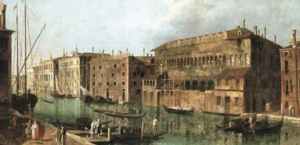
For the purpose of the novel I had to turn to 18th-century representations of the building, such as this one by Francesco Albotto:
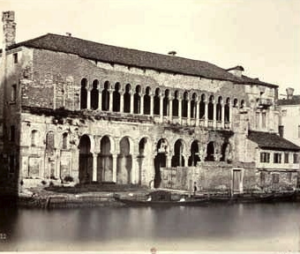 There also exist photos of the fontego before the radical restoration/ reconstruction undertaken in the 1870s by Berchet; these make it clear that some repair-work was certainly required.
There also exist photos of the fontego before the radical restoration/ reconstruction undertaken in the 1870s by Berchet; these make it clear that some repair-work was certainly required.
It isn’t clear, however, where Berchet got the idea of the two flanking towers. These seem to have been his own whim. Here’s another photo of it as it is today; the fog, at least, helps to create something of the atmosphere of The Four Horsemen:
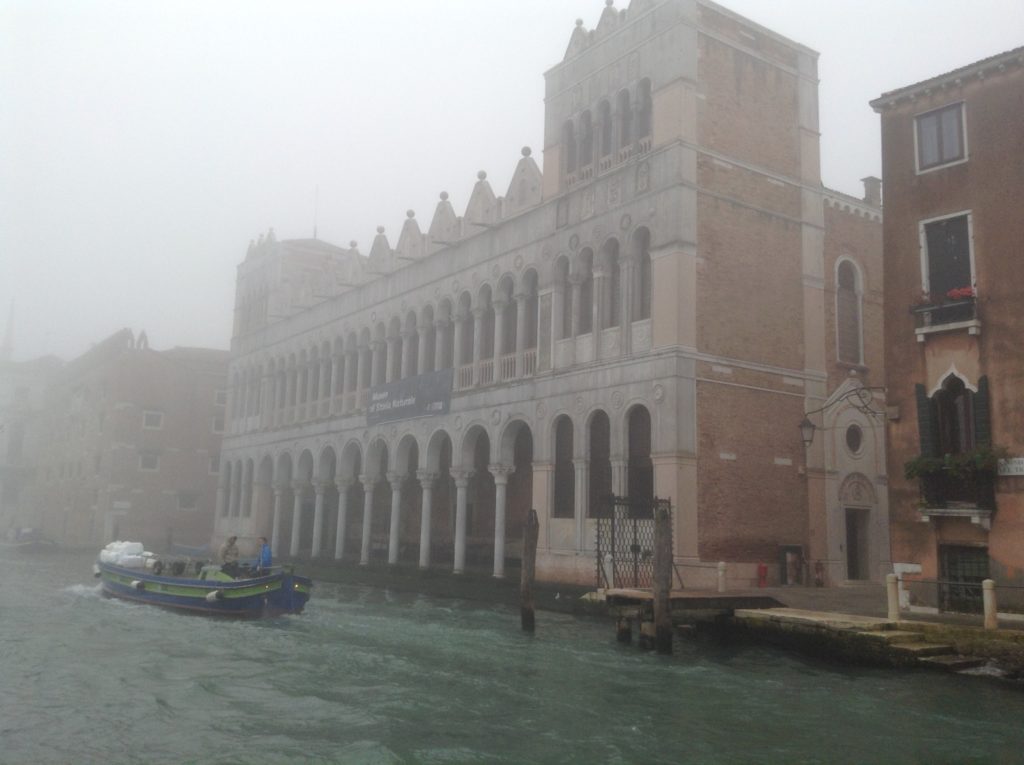
It is difficult to get a definite idea of what the interior was like during the period of Turkish residence. We know that it could host up to 300 people, and that it contained a hammam and a prayer-room. It was locked at night and all Turks living and working in the city were supposed to reside there; in that sense it was rather like the Jewish Ghetto on the other side of the Grand Canal. However, it is known that a number of Turks did reside in other areas of the city, and it is possible that the rules were only applied strictly during those periods when the city was actually at war with the Ottoman Empire.
The very presence of this emporium (because that is essentially what it was) testifies to the vital importance of commercial relations with Turkey. The fall of Constantinople to the Ottomans in 1453 was a massive shock to the whole of Christendom but Venice did not allow it to put an end to their trade with the East. Venice continued to maintain a “Bailo” (representative) in Istanbul, and the Turks kept up their Fontego. In the 16th century more than half of Venice’s grain came from lands under Ottoman rule, and it also imported wool, hides and textiles. In the Middle Ages Venice had been the first to adopt the Byzantine table-fork (the Venetian word for fork is still the Greek-derived piron), and after the Fall of Constantinople they were the first to start drinking the Turkish “black water”, or coffee. We know what Sultan Mehmed II, the Conqueror, looks like thanks to the fact that Gentile Bellini was invited to Istanbul, just 26 years after the Conquest.
Although the Republic depicted itself as the saviour of Christendom against the Ottoman menace (particularly after the splendid victory of Lepanto, 1571), commercial relations with Istanbul, although sometimes interrupted by war, never broke off completely. And periods of peace lasted much longer than the wars; not long after Lepanto, for example, there was a period of peace that lasted until 1645. And even in the midst of war trade often found a way to continue.
Although the Venetians officially abominated the religion of the Turks, one of the city’s Doges, Niccolò Contarini (1630-31), who was also a historian, studied the cohesion of the Ottoman Empire and acknowledged that Mahomet’s skills in “organising religion to bring the multitudes to himself and to extend the state”. And it should not be forgotten that it was in Venice that the first printed copy of the Koran was produced (1538).
In 1601 Pope Clement VIII, trying to get support for a final Crusade, declared with some bitterness to the Venetian envoy: “We would be happy if you behaved with as much respect to the Apostolic See and the person of the Pope as you do to the Turks.”
This, too, is part of the background to the story of The Four Horsemen.

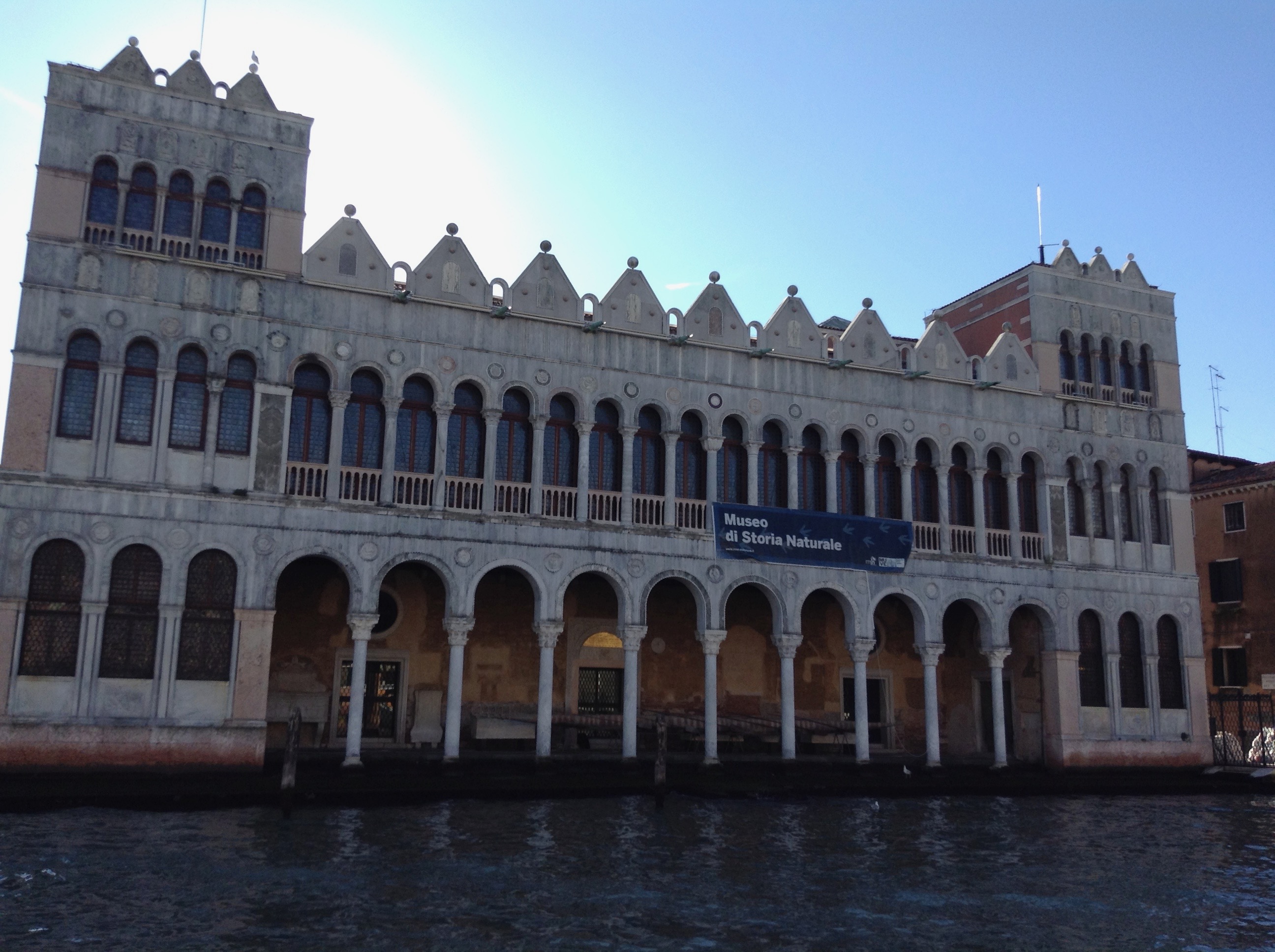
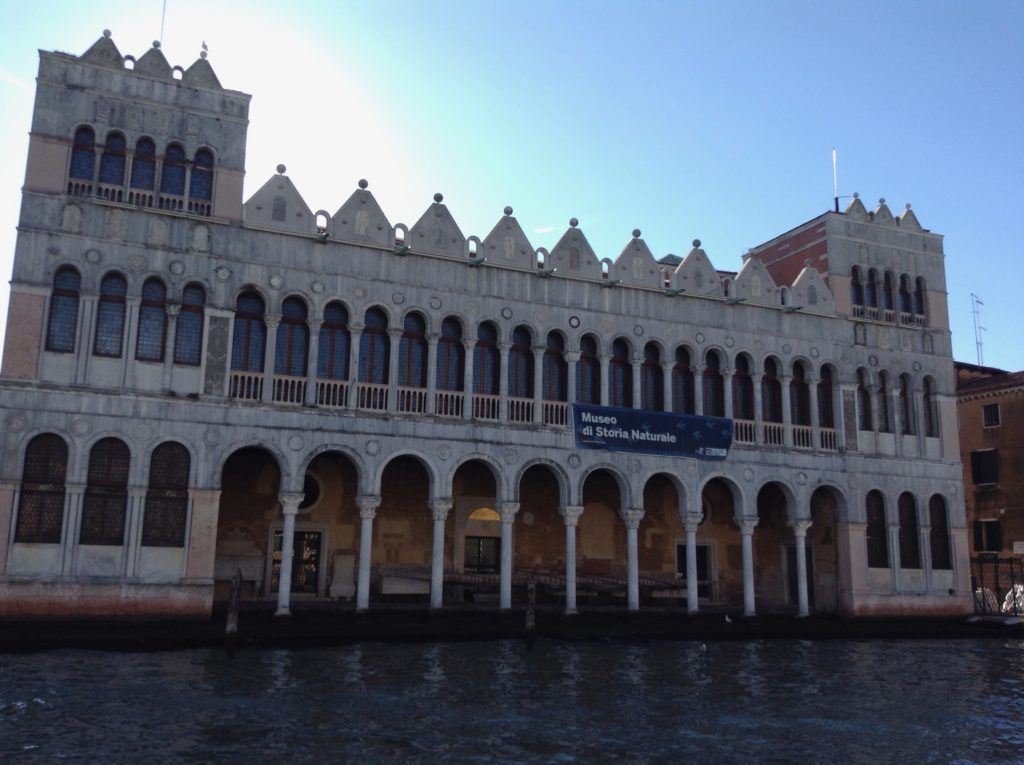
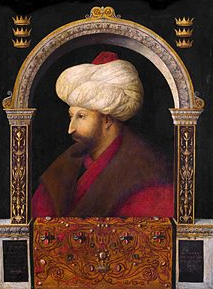
0 Comments